Last updated: March 24, 2023
Article
Access Granted: Unlocking Archival Potential with Digitization
Why Digitize?
Digital collections are living databases of digitized objects that have become a part of a digital culture. They demonstrate how tasks like word-searching, zooming images, downloading, and sorting information come with a few clicks of the mouse, how fast information processing happens comparing to processing from texts with handwritten or typed index cards, and allow new creative ways of working with information sources to emerge. New software is capable of allowing the empirical and computer-assisted study of large bodies of written texts or transcribed speech, researching human behavior and cultural trends through qualitative analysis of digitized texts, and performing visual search of artworks. These are just some examples which demonstrate how digital content can potentially trigger new areas of research.
While there can be a myriad of reasons why organizations create digital collections, we are going to focus on two of them: 1) the role of digital copies, or surrogates, for physical preservation and 2) creating digital surrogates for public access.
Preservation Through Digitization
Some of the goals of physical preservation include minimizing physical contact with fragile artifacts, preventing chances of their accidental damage during physical handling, and bringing to minimum their exposure to light, humidity, and the contact with human hands and germs. Every direct interaction with archival records reduces their life.
By creating digital surrogates, we bear in mind that digital version may someday be the only record of an original object that deteriorates or is destroyed. The Cave of Altamira covered in pre-historic charcoal drawings got its replica in 2001, a step that was done to physically preserve the unique site. One of the most precious and lavish manuscripts, the Très Riches Heures du Duc de Berry, has a number of facsimile editions distributed among libraries and sold to private collections while its digital reproduction allows the user to zoom in, to scrutinize tiny details with unlimited time and to virtually flip pages – luxuries which not even the most distinguished visitor of the Musée Condé may enjoy as the original illuminated manuscript is no longer available to the public due to its degraded physical condition. Brittle, fragile, physically deteriorated manuscripts, maps, photographs, and other media can be accessed through their high-quality digital versions. Even though there are occasions when interaction with the original can be indispensable for a specific research, study, and education, reducing direct physical handling significantly extends life of the original records.
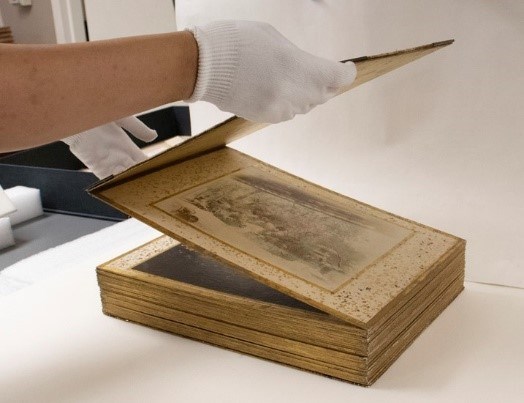
NPS Photo / Evgenia Diakonenko
A part of the Charles Appleton Longfellow’s travel photography collection related to East Asia is assembled in an extremely heavy accordion photograph album that is not only difficult to take out of its archival box, but also to flip from side to side. Handling such a bulky item requires at least two people and lots of physical space to guarantee its safe navigation and manipulation. Other items from the same collection may not yet be “ready” for a researcher's handling, as their gilded paper border is in need of attentive hands of a paper conservator. The digital surrogates of these photograph albums provide ready access to the images without detrimental handling of the fragile original.
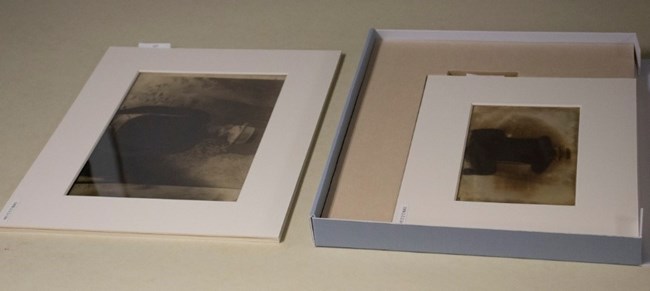
NPS Photo / Evgenia Diakonenko
Featured in publications and exhibits, Charles Appleton Longfellow’s portraits with tattoos are some of the most frequently requested by researchers. Preserved in the archives the original glass plate negatives require special storage boxes, specifically weighted for glass plate negatives. Given the fragility of their physical format and their weight, each handling and retrieving of the boxes poses hazards to the originals and the staff member involved. Glass plates are most vulnerable to cracking, flaking, and breaking during the periods in which they are handled. Having the digitized image of each plate and a scan of the processed plate provides researchers with a digital surrogate while leaving the historical artifact intact.
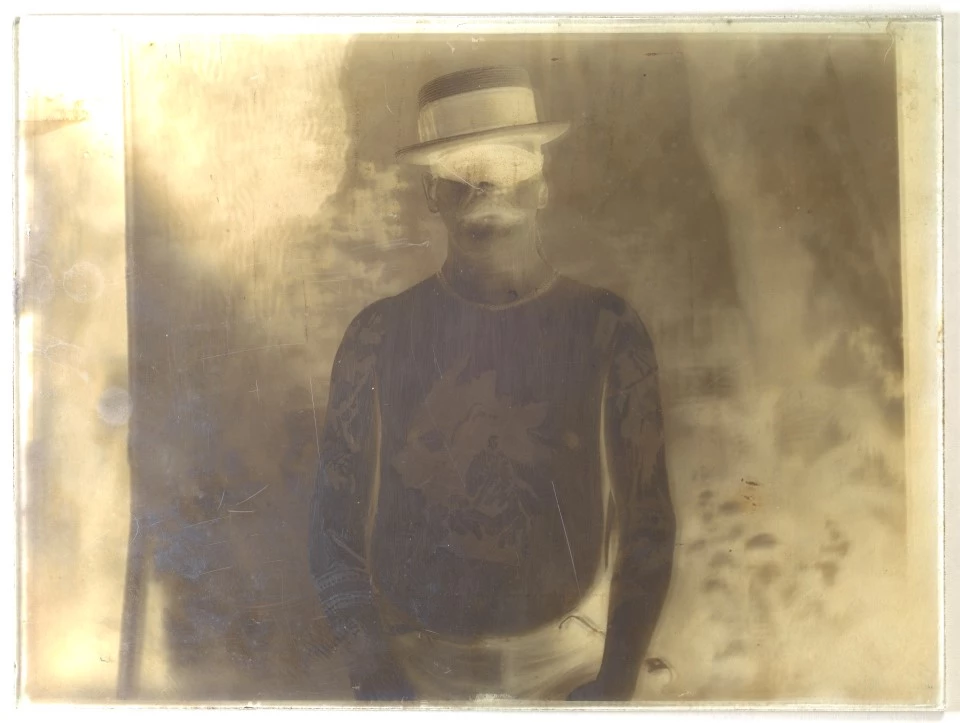
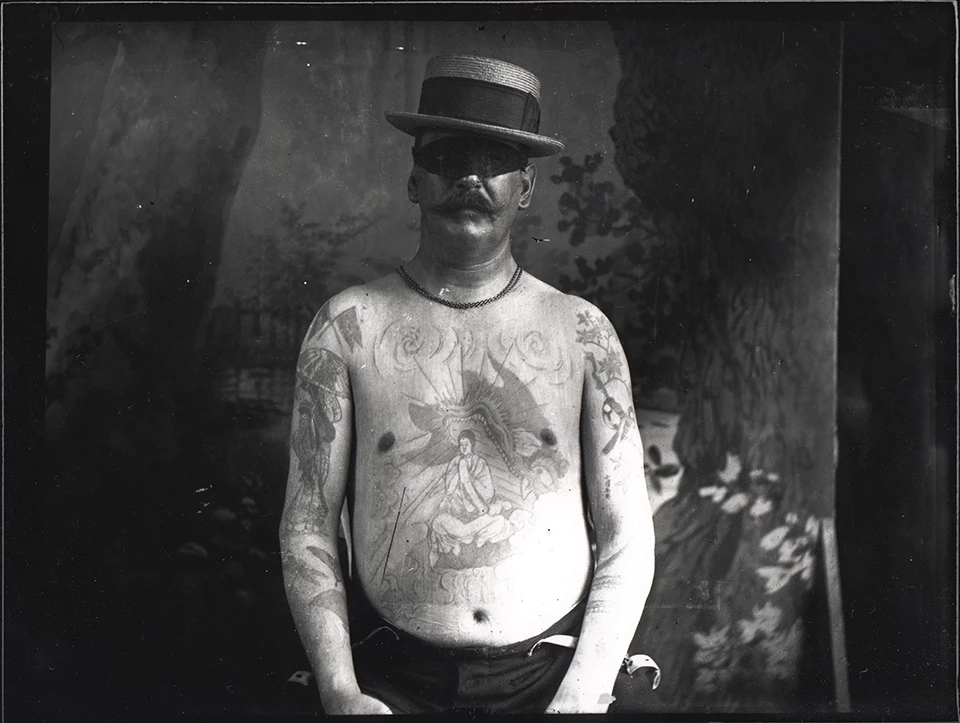
Left image
The original image source is a glass negative, which is challenging to handle and has its image reversed from the final print.
Credit: NEDCC
Right image
The high resolution positive image of Charles Longfellow with tattoos gives more information and a better visual.
Credit: NEDCC
Public Access
Another reason for creating digital collections is to provide free and continuous public access to the collections. Unmediated web access allows the collection to reach a wider audience and minimizes geographic barriers. NPGallery is a National Park Service initiative that allows digital content in a range of formats from the parks’ archives to be uploaded in a public platform. Let’s look at a few examples of what one can do through the NPGallery and how to perform searches.
How to Browse NPGallery
It makes sense to begin a search by shaping a research question and keeping in mind that in case a search is related to certain popular personalities, the results can be overwhelming: the NPGallery Digital Asset Management System (DAMS) has 427,831 digital assets directly or indirectly related to George Washington (e.g., listing all places which carry his name) combined between all formats. Figuring out how to filter the information is very important for searching productively.

The NPGallery Digital Asset Management System (DAMS) aims to store, organize, and share photos and other digital files with a mission to make the content accessible for public use. It allows the user to search by state and/or by a specific park, and it also allows them to perform a simple text search matching all or any words included in the metadata (title, creator, subject, keyword/s). A specific format can be targeted through the search (video, image, album, document, etc.) if necessary. To further narrow down the search, the collection’s name needs to be selected: it is listed alphabetically and requires knowing the exact collection’s title within the specific park. For example, to see all the museum objects whose photographs were uploaded into NPGallery from the Longfellow House, Longfellow House–Washington's Headquarters National Historic Site Museum Collection should be selected. If we only want to see drawings from the same collection, the keyword ‘drawing’ should be added to the key search bar. By inputting ‘drawing’ in the top search bar, we will retrieve not only the drawings, but all the objects that have a drawing on them, e.g., one of the kimonos with a drawn decoration from the collection. Searching by keyword is trickier and can bring different results as the digital asset must have the exact word added in the keyword metadata field.
How to Use the LONG Digital Archive Portal
Within the broad NPGallery Digital Asset Management System, some parks have separate portals which contain a digital archive of manuscripts and historic photographs. The Digital Archives Portal for Longfellow House–Washington's Headquarters National Historic Site contains scans from selected personal papers and photograph collections, targeted for their rarity, fragility, and research interest. In the Portal, users can search manuscripts and correspondence more efficiently by adding not only the date, keyword, or a phrase in search, by specifying which collection it belongs to and whether, for example, the sought letter is outgoing or incoming. The advantage to go directly to the specific park’s NPGallery is to be able to target only the collections belonging to the specific park and to perform a faster search.

Browse by Collection
The portal has embedded hierarchy of archival collections arranged as a drop-down menu. Researchers can specify any available level of the description going down from broadest to most specific: the collection, the series, or the file unit to target a specific year of correspondence, an album or a scrapbook assembled by a particular person. These levels are described in the finding aids to the papers, which help researchers locate material related to their topic of interest.
Keyword Search
There is another way to interact with the NPGallery’s portal by using a simple text search and combining keywords. (Use the dropdown menu to choose whether keywords search "All Words" (AND), "Any Words" (OR), or a "Phrase" (exact words).)
The keyword search here is the result of the critical judgement of an archivist when processing digital surrogates. For example, letters sent from France or those that depict travels through France will most likely be searchable with “France” as a keyword. The same keyword will retrieve all correspondence and historic photographs that contain “France” anywhere in the description, text, or title. Authors and recipients are listed full, standardized names, including maiden and married names where known. For example, Fanny Longfellow appears as "Fanny (Appleton) Longfellow (1817-1861)" and her best friend as "Emmeline (Austin) Wadsworth (1808-1885)". While certain search tools can have powerful algorithms, human wit and subject understanding will contribute towards more specific and granular search results.
Points of View
When it comes to viewing the results, we can choose from three options:
- Grid provides a basic outline with images and image titles. Recommended for browsing searches of photograph collections.
- List pulls out a smaller image, title, and a detailed description (full transcription when available).
- Gallery provides thumbnails and the largest image preview. Below the selected image is the image title and description (full transcription when available.) Recommended for browsing searches of manuscript material.
The results can be filtered as most relevant, alphabetically, or by the more recently uploaded (newest first) to the NPGallery.
Clicking on Image Information and Downloads opens the image with zoom controls and its associated metadata (for transcribed letters including their full text in the description section). This is the place where all information about the physical records and their digital surrogates is represented.
New Possibilities
By creating a digital version, the organization provides access to a new resource that needs to be carefully curated through the quality of its metadata and its connection to other digital surrogates in the collection. Once a digital collection is brought to life and becomes available to researchers and web crawlers, it can be accessed by researchers, its metrics can be evaluated, new potential software can be used for text-mining and text analysis of transcribed manuscripts, it can be incorporated in digital humanities projects, and the archival and museum collections can be redefined in the digital environment.
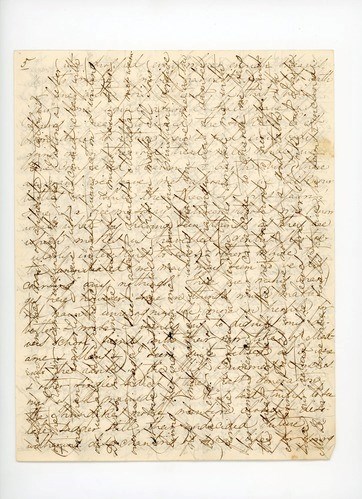
Frances Appleton Longfellow Papers, Longfellow House-Washington's Headquarters NHS
Longfellow House–Washington's Headquarters National Historic Site is a unique place. On the one hand, it serves as a visually stunning example of 18-19th century architecture, historical interiors and gardens that invite visitors to be walked through and explored in-person. The house’s genius loci can be experienced through its unique atmosphere, stories of its long and short-term residents and their guests who connected with the place at some point of their life. On the other hand, the house also has an extensive collection and archives that include the Longfellow family’s journals, manuscripts, photographs, design records, and works of art whose high-quality digital surrogates can be delivered to educators and researchers, be explored in a range of disciplines, and become a primary resource for someone’s research and a journey through history.
- Evgenia Diakonenko, Digital Archive Intern, 2021
